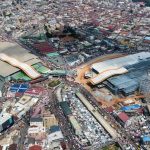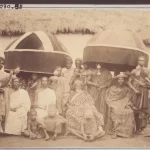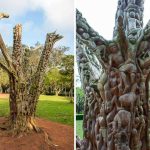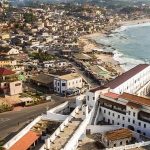This website uses cookies so that we can provide you with the best user experience possible. Cookie information is stored in your browser and performs functions such as recognising you when you return to our website and helping our team to understand which sections of the website you find most interesting and useful.

Kumasi Metropolitan Assembly (KMA): Location, History, and the Kumasi Central Market Project
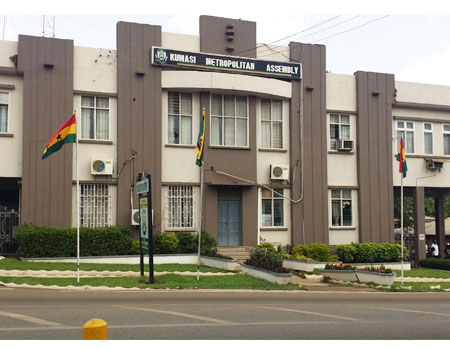
The Kumasi Metropolitan Assembly (KMA) stands as a pivotal institution among Ghana’s 261 Metropolitan, Municipal, and District Assemblies (MMDAs). Situated in the heart of the Ashanti Region, Kumasi, the administrative capital, has a rich history dating back to its founding in the 1680s by King Osei Tutu I. This article delves into the historical evolution, geographical significance, administrative structure, and a transformative project at the heart of Kumasi – the Kumasi Central Market.
Historical Evolution of Kumasi:
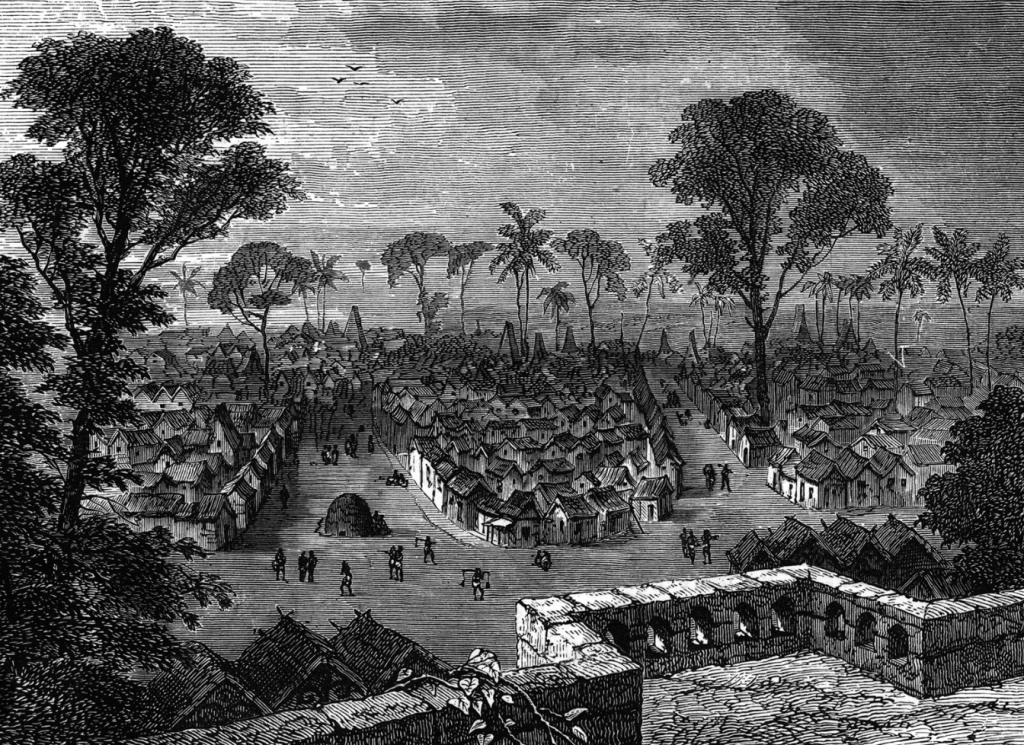
Origins and Growth King Osei Tutu I founded Kumasi as the capital of the Asante State in the 1680s. Over time, it evolved into a major commercial hub, strategically positioned at the crossroads of the Gold Coast’s trading routes. Despite its prominence, Kumasi fell under British colonial rule in 1890, growing to become the second-largest city in Ghana.
Garden City of West Africa The city’s expansive greenery earned it the title of the “Garden City of West Africa,” highlighting its aesthetic appeal and environmental consciousness.
Geographical Location and Area Size of Kumasi Metropolitan Assembly (KMA):
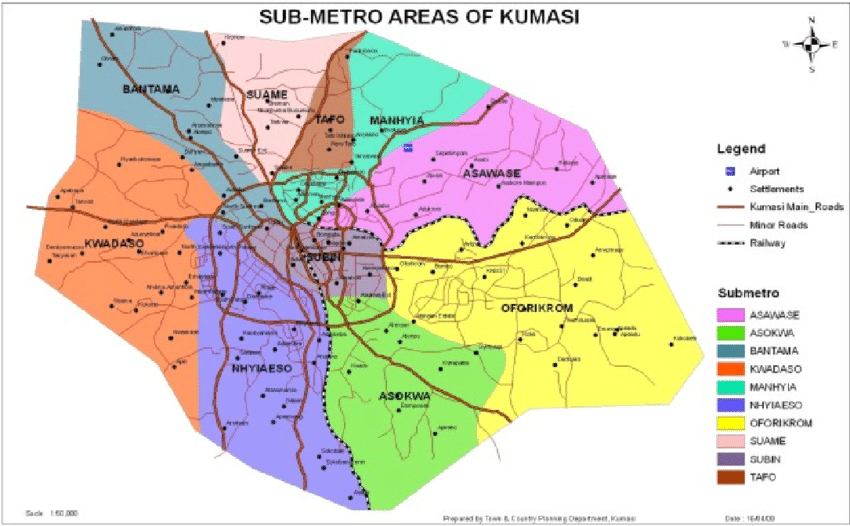
Strategic Position Situated approximately 270 km north of Accra, Kumasi plays a crucial role in Ghana’s political landscape. With a surface area of 214.3 square kilometers, it is nestled in the transitional forest zone, elevating 250 to 300 meters above sea level.
Google Map to KMA
Importance of the Transitional Forest Zone Kumasi’s location in the transitional forest zone not only contributes to its unique ecosystem but also presents opportunities for sustainable development and biodiversity conservation.
Administrative Structure:
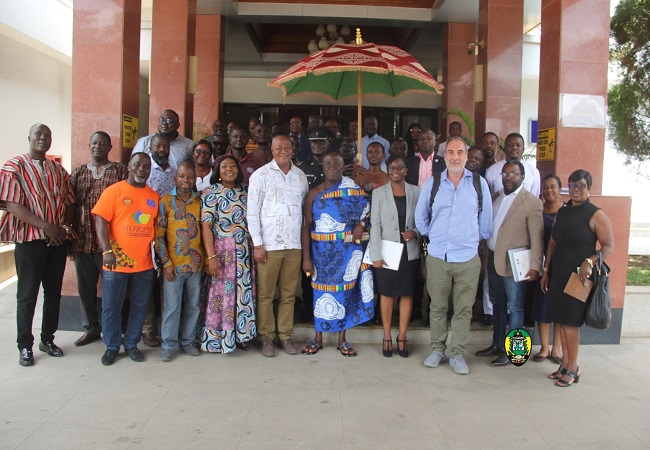
Establishment and Evolution of KMA Legislative Instrument 1614 of 1995 laid the foundation for the Metropolitan Assembly under the Local Government Law 1988. Initially divided into four sub-metropolitan areas, subsequent amendments, such as LI 1805, 2005, expanded the assembly to ten sub-metropolitan districts.
Municipal Upgrades In 2012, Asawase Sub-Metropolitan District Council was carved out from KMA to create the Asokore Mampong Municipal District Assembly through LI 2112. This left the Kumasi Metropolis with nine sub-metropolitan district councils.
Political Dynamics within KMA The intricate political governance of the Assembly involves collaboration between the Metropolitan Chief Executive, the Assembly members, Members of Parliament, and department heads. This collaborative approach ensures effective administration and representation of the diverse interests within Kumasi.
Kumasi Central Market Project:
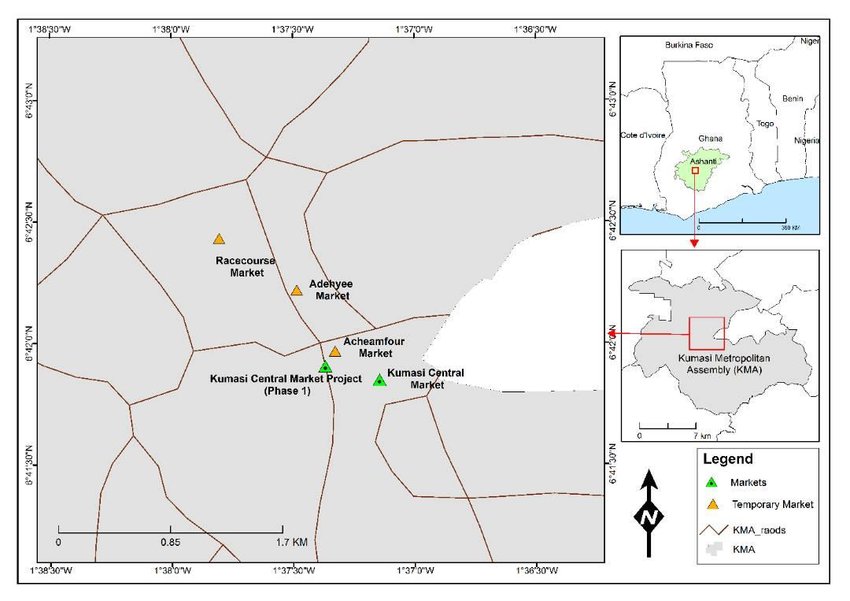
Overview and Significance: The Kumasi Central Market stands at the forefront of transformation within the metropolis. As a preeminent commercial hub, its redevelopment signifies a monumental step towards modernization and economic growth.
Project Phases and Progress: Categorized into distinct phases, the Kumasi Central Market project, slated for completion by the June 2024 deadline, is witnessing substantial progress. With 80% completion, the market’s redevelopment encompasses 10,000 commercial spaces and upper levels, providing a dynamic shopping experience.
Unique Features of the Market’s Design :The pre-engineered steel structure of the Kumasi Central Market not only ensures durability but also reflects a blend of traditional aesthetics and modern architectural practices. The incorporation of the Skeletal Structure adds a unique touch, making it a landmark in Kumasi.
Challenges and Solutions: The reality of executing a project of this magnitude comes with challenges. Issues such as market problematics, construction delays, and ensuring cautious integrity in the development process are being navigated with strategic planning and a commitment to quality.
Community Engagement and Impact: The Kumasi Central Market project goes beyond infrastructure development. Extensive community engagement has been a cornerstone, ensuring that the project aligns with the needs and aspirations of the local population. The positive socio-economic impact is already evident, with the creation of job opportunities and enhanced market facilities.
In conclusion, the Kumasi Metropolitan Assembly’s historical significance, administrative structure, and the ongoing Kumasi Central Market project showcase a commitment to growth, development, and the preservation of Kumasi’s unique cultural and economic identity. The transformative journey, guided by cautious integrity and foresight, promises a future where Kumasi continues to thrive as a regional powerhouse. The Kumasi Central Market project serves as a testament to the city’s resilience and progressive spirit, contributing to its status as a vibrant economic and cultural hub in West Africa.
Frequently Asked Questions
1. What is the full form of KMA? : The acronym KMA stands for Kumasi Metropolitan Assembly, which operates as the local government authority for Kumasi, Ghana. It is officially recognized as the KUMASI METROPOLITAN ASSEMBLY | KUMASI – GOVERNMENT OF GHANA.
2. What is the duty of KMA? : The KMA is dedicated to enhancing the quality of life for the residents of the metropolis. Its core responsibilities involve providing essential services and fostering an enabling environment, ensuring the holistic and sustainable development of the city.
3. Which is bigger Kumasi or Accra? : Kumasi is the second-largest city in Ghana, following the capital, Accra. This distinction is based on both population and geographical size, with Kumasi being a significant urban center in the country.
4. What are the towns under Kumasi Metropolitan District? : For effective administration, the KMA is divided into nine Sub-Metropolitan District Councils, namely Asokwa, Bantama, Kwadaso, Manhyia, Nhyiaeso, Oforikrom, Suame, Subin, and Tafo.
5. Which district is KMA? : The Kumasi Metropolitan Assembly (KMA) is one of the 261 Metropolitan, Municipal, and District Assemblies (MMDAs) in Ghana. It falls under the 43 MMDAs in the Ashanti Region, with Kumasi serving as its administrative capital.
6. What is the growth rate of Kumasi? : As of 2024, the metro area population of Kumasi is 3,903,000, reflecting a 3.58% increase from the previous year. This growth trend demonstrates the city’s continual development and expansion.
7. What is Ghana’s 3rd largest city? : Tamale, located in the Northern Region, holds the position as Ghana’s third-largest city, following Accra and Kumasi.
8. Which city is the largest in Ghana? : Accra, the capital city of Ghana, situated on the Atlantic coast, holds the distinction of being the largest city in the country. It serves as both the cultural hub and economic driver of Ghana.
9. Which part of Kumasi is nice? : While all neighborhoods in Kumasi are generally safe, Nhyiaeso and Ahodwo are particularly notable for their low crime rates and secure environments, making them favorable residential areas.
10. Does Kumasi have an international airport? : Kumasi Airport achieved international status in 2014. Despite being recognized as an international airport, it primarily operates at a regional level, with full security, customs, and immigration staff in place since 2003.
11. Is Kumasi a town or city? : Kumasi is officially classified as a city and is situated in south-central Ghana. Its establishment as the capital of the Ashanti empire in the 17th century solidified its status as a prominent urban center.
12. Who founded Kumasi? : Kumasi was founded by Osei Tutu, the first king of the Ashanti empire, around 1680. The city’s origins trace back to the 17th century when Osei Tutu chose the site for his capital, conducting land negotiations under a kum tree, from which the town derived its name.
13. Who is the mayor of Kumasi in 2023? : As of 2023, Sam Pyne holds the position of Mayor of Kumasi, having secured 94.8% of the votes in a decisive victory.
